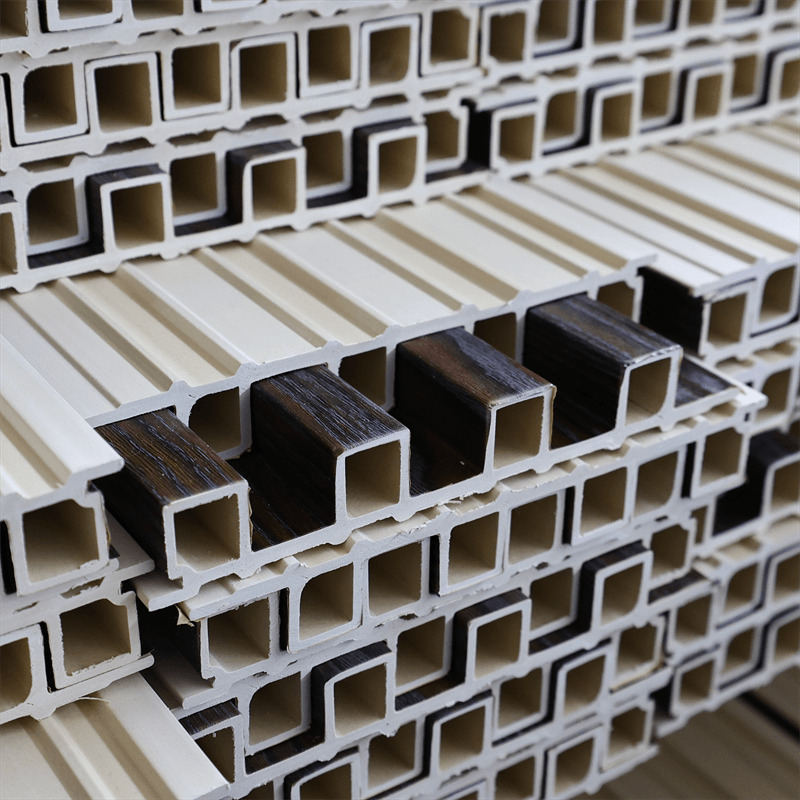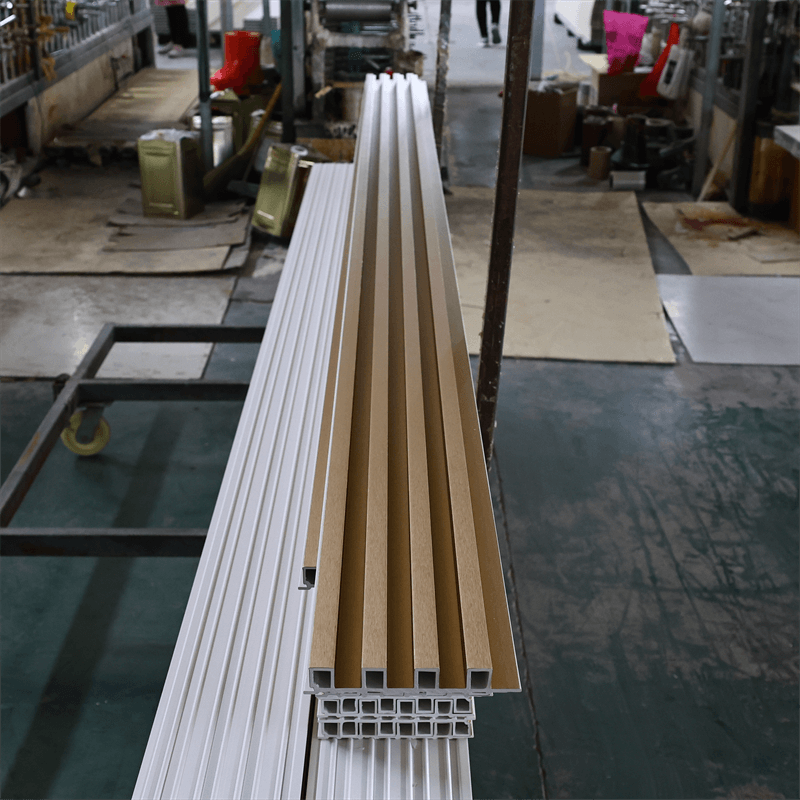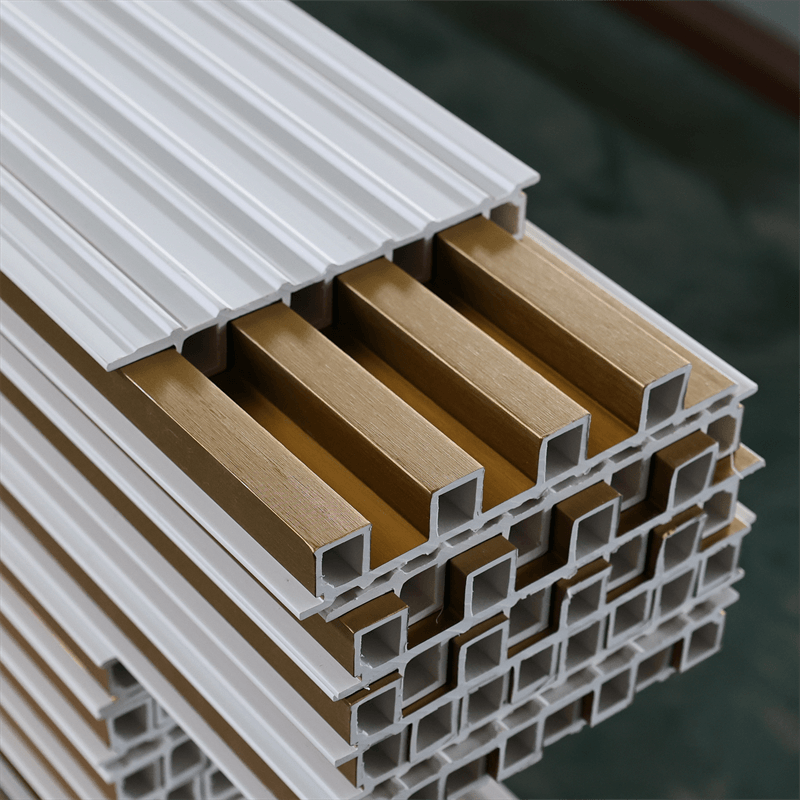The choice of building materials significantly impacts the overall quality, performance, and sustainability of a structure.
Wood-Plastic Composite (WPC) wall panels have emerged as a popular alternative to traditional building materials due to their unique characteristics and benefits.
This essay aims to compare WPC wall panels to traditional building materials, focusing on four key aspects: durability and lifespan, environmental impact, maintenance requirements, and design versatility.

I. Durability and Lifespan: WPC Panels vs. Traditional Materials
Durability is a crucial factor in selecting building materials, as it determines the lifespan and long-term performance of a structure.
WPC wall panels offer notable advantages in terms of durability compared to traditional materials such as wood, brick, or concrete.
WPC panels are engineered to be highly resistant to rot, decay, and insect damage, ensuring their longevity even in harsh environmental conditions.
Unlike wood, WPC does not warp, crack, or splinter, making it a reliable choice for both interior and exterior applications.
Additionally, the composition of WPC panels, combining wood fibers and plastic polymers, provides added strength and stability, enhancing their overall durability and lifespan.
In contrast, traditional materials may require regular maintenance, repairs, or replacements over time.
Wood is susceptible to rot, insect infestation, and moisture damage, while brick and concrete can deteriorate due to weathering and structural stresses.
The superior durability and extended lifespan of WPC wall panels make them a compelling option for long-term investment in construction projects.
II. Environmental Impact: Sustainability Considerations
With growing concerns about environmental sustainability, the choice of building materials plays a significant role in reducing ecological footprints.
Comparing WPC wall panels to traditional materials reveals noteworthy differences in terms of environmental impact.
WPC panels are considered more environmentally friendly than traditional materials such as wood or concrete.
The incorporation of recycled materials, such as plastic polymers, reduces the demand for virgin resources and helps divert waste from landfills.
Additionally, WPC manufacturing processes often involve lower energy consumption and carbon emissions compared to the production of traditional materials.
Moreover, the durability and long lifespan of WPC wall panels contribute to sustainability by reducing the need for frequent replacements and minimizing construction waste.
This aspect aligns with the principles of circular economy and resource conservation.
In contrast, traditional materials may involve significant environmental consequences.
The extraction of wood and the energy-intensive production processes of materials like concrete contribute to deforestation, habitat destruction, and carbon emissions.
The limited lifespan of some traditional materials can lead to a higher accumulation of construction waste over time.
III. Maintenance Requirements: Ease of Upkeep
Maintenance considerations are crucial when comparing WPC wall panels to traditional materials.
The ease of upkeep and associated costs play a significant role in the long-term viability of a building material choice.
WPC wall panels offer significant advantages in terms of maintenance requirements. Unlike wood, they do not require regular sealing, staining, or painting to maintain their appearance and protect against degradation.
WPC panels are resistant to rot, moisture damage, and insect infestation, reducing the need for ongoing maintenance efforts.
Traditional materials, on the other hand, often require periodic maintenance to ensure their performance and aesthetic appeal.
Wood may require regular treatments, such as staining or sealing, to protect against decay, UV damage, and insect infestation.
Brick and concrete may need repairs or repointing over time to address cracks, water penetration, or structural issues.
The low-maintenance nature of WPC wall panels results in cost savings and reduced labor requirements over the lifespan of a structure.
This aspect makes WPC an attractive option for homeowners, businesses, and public facilities seeking materials that minimize ongoing maintenance efforts.
IV. Design Versatility: Aesthetics and Adaptability
The design versatility offered by building materials greatly influences architectural creativity and the ability to meet diverse project requirements.
When comparing WPC wall panels to traditional materials, their design flexibility and adaptability become apparent.
WPC panels come in a wide range of colors, textures, and finishes, allowing for diverse aesthetic options.
Whether emulating the look of natural wood, stone, or contemporary finishes, WPC panels offer the opportunity to achieve various design styles and architectural visions.
Traditional materials may have limitations in terms of color options, textures, or adaptability to specific design concepts.
Wood has natural variations and limited color choices, while brick and concrete offer a more limited range of finishes and surface treatments.
Additionally, WPC panels can be easily customized and cut to fit specific design requirements, enabling precise installations and creative architectural details.
The lightweight nature of WPC panels further enhances their adaptability and ease of handling during the construction process.

In comparing WPC wall panels to traditional building materials, it becomes evident that WPC panels offer distinct advantages in terms of durability, environmental impact, maintenance requirements, and design versatility.
The superior durability and extended lifespan of WPC panels make them a reliable choice for long-term investment in construction projects.
Moreover, WPC panels demonstrate favorable sustainability characteristics, incorporating recycled materials and reducing environmental impact compared to traditional materials.
The low-maintenance nature of WPC panels contributes to cost savings and ease of upkeep, making them an attractive option for homeowners and businesses.
Lastly, the design flexibility and adaptability of WPC panels provide architects and designers with versatile options to realize their creative visions and meet diverse project requirements.
Overall, WPC wall panels present a compelling alternative to traditional building materials, offering a balance of durability, sustainability, low-maintenance, and design versatility.
As the construction industry continues to prioritize performance, sustainability, and aesthetics, WPC panels emerge as a viable choice for a wide range of applications, contributing to the advancement of modern architecture and sustainable building practices.

